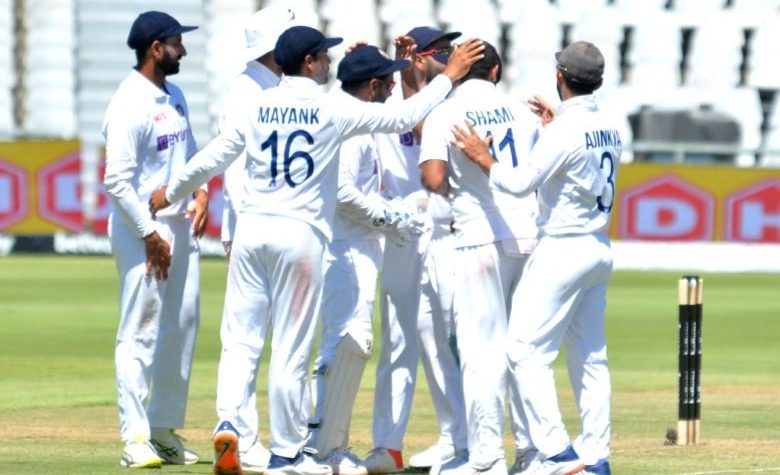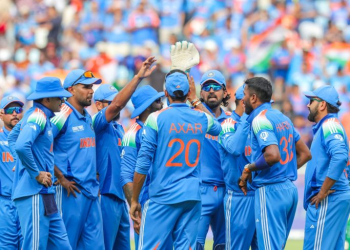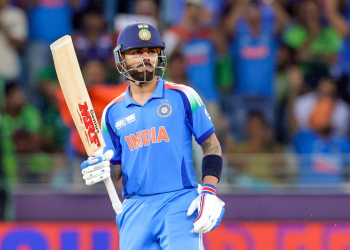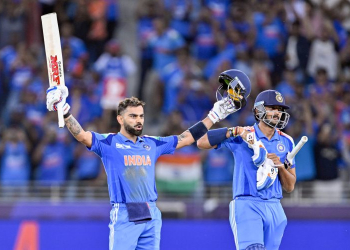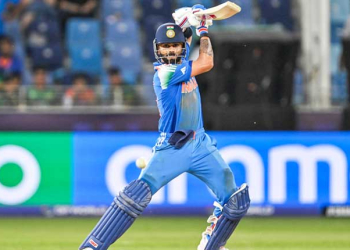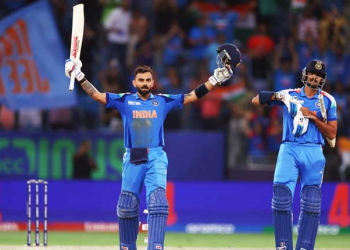Cape Town: Winning a Test series in South Africa has been a tough nut to crack for India. So, when the Indian team flew for their eighth Test tour of the Rainbow Nation, much was expected of them to register their first-ever series win in the country. They lived up to the overwhelming pre-series favourites billing when they won the first Test at Centurion by 113 runs.
But what happened next was unbelievable as South Africa fought back to win the next two Tests in Johannesburg and Cape Town by seven wickets each. It meant South Africa, a team in transition and bereft of many experienced players, was able to prevent India from conquering ‘the final frontier’.
We try to dig into where did it go wrong for India after being 1-0 up in the series and dominating the opening day of the series with 272/3.
1. Batting collapses
In the first Test at Centurion, India had a 117-run opening stand between KL Rahul and Mayank Agarwal to post 327 in the first innings despite the middle order not doing much. Though India fell from 109/4 to 174 all out in the second innings, the base in the first innings was enough to win the match.
But in the second Test at Johannesburg, Rahul, Agarwal, Pujara and Rahane fell quickly, reducing India to 91/4 at one stage. It took a fighting 46 from Ravichandran Ashwin for India to cross 200. In the second innings, though Pujara and Rahane along with Shardul Thakur and Hanuma Vihari starred to post 266, the damage from the first innings eventually proved to be costly in losing the match.
In the third Test at Cape Town, Virat Kohli stood tall to make 79 but didn’t get much support from other batters as India fell from 162/4 to 223 all out in the first innings. Despite getting a narrow 13-run lead, India had another collapse from 154/2 to 198 all out in the second innings with Rishabh Pant remaining unbeaten on 100.
2. Lack of big partnerships
Knitting partnerships and making them bigger was something which Mayank Agarwal had stressed upon on day one of the first Test. In their first innings, the 117-run partnership was backed up by stands of 82 (between Rahul and Kohli) and 79 (between Rahul and Rahane).
South Africa, on the other hand, had just one big partnership: 72 between Temba Bavuma and Quinton de Kock. Though neither teams got a half-century stand in their second innings, India having crucial first innings partnerships did the trick for them.
But in the second Test, India had some big partnerships but did not come at a consistent rate. Sample this: India’s best three partnerships in first innings were 42 (between Rahul and Vihari), 40 (between Ashwin and Pant) and 36 (opening stand) while South Africa’s best three partnerships in the first essay were 74 (between Elgar and Petersen), 60 (between Bavuma and Verreynne) and 38 (between Maharaj and Jansen).
In the second innings, barring the 111-run stand between Pujara and Rahane, India didn’t have a half-century association to back it up. South Africa, while chasing 240, strung partnerships of 47, 46, 84 and 68 not out with Elgar carrying his bat throughout the innings to win the match.
In the third Test at Cape Town, India had just two half-century stands of 62 (between Pujara and Kohli) and 51 (between Kohli and Pant) as compared to South Africa’s 67 (between van der Dussen and Petersen) in the first innings.
But in the second innings, India had just one big partnership of 94 (between Kohli and Pant) as rest of the batters couldn’t stitch stands to back it up. South Africa, on the other hand, had partnerships of 78, 54 and 57 not out to complete their chase. Clearly, lack of big partnerships hurt India a lot after Centurion.
3. Absence of Sharma and Jadeja
The absence of experienced players like Rohit Sharma and Ravindra Jadeja was going to hurt India sometime in the series. Sharma’s best year in his second Test avatar as the opener was in 2021, where he scored 906 runs in 21 innings at an average of 47.68 with two hundreds and four half-centuries.
In the England series, Sharma emerged as a reliable opener in overseas conditions, making 368 runs in four matches at an average of 52.57 and had formed a bankable opening pair with Rahul as well.
But just before the departure to South Africa, Sharma injured his left hamstring and was forced to miss the tour. It meant giving a good start was dependent on the new opening pair in Rahul and Agarwal. Rahul began well with 123 at Centurion and a fifty in Johannesburg but didn’t make it big in other chances. Same goes for Agarwal as runs began to dry up after starting off the tour with 60.
Jadeja, on the other hand, has been a vital cog in the wheel for India in Tests in the past few years. With his controlled left-arm spin and quick batting abilities, he was the all-rounder crucial in maintaining India’s balance in the playing eleven, especially in overseas conditions.
His absence meant the sole spinner plus all-rounder role went to Ashwin, who had just one innings of note (46 in Johannesburg) and took just three wickets in a series dominated by pace.
4. Pujara and Rahane not up to the mark
If this series showed one thing, it was that Cheteshwar Pujara and Ajinkya Rahane were not up to the mark. With the duo enduring lean patches along with Kohli, India’s experienced middle-order batters had to step up consistently in South Africa, especially with no Rohit Sharma at the top.
Rahane and Pujara got just one fifty in six innings which included a counter-attacking 111-run stand at Johannesburg. The duo was mainly riding on their reputation rather than present form in the playing eleven. The failures in South Africa meant Pujara and Rahane are under immense scrutiny to retain their places ahead of home Tests against Sri Lanka in February and March.
(IANS)



